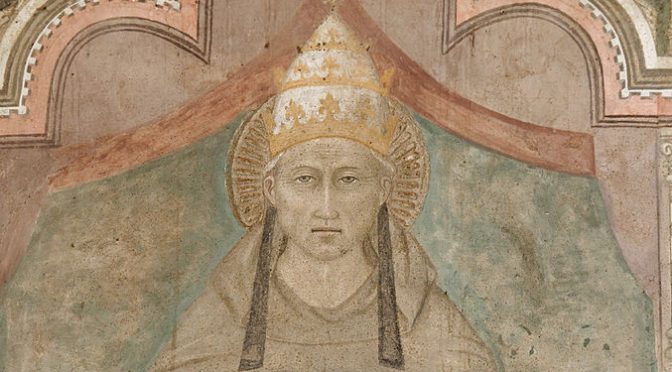By Br. Alexis Bugnolo
For more than 8 years Catholics have discussed and debated the Declaration of Pope Benedict XVI, what it means and the peculiarities of its formulations.
Now after 8 years, it is more and more clear that it is not a Papal Abdication, but only an act of retirement, which renounces service but retains all power, authority, office, title and dignity.
This becomes clearer if we look to what words a canonized Saint, Celestine V, used to renounce the Papacy.
Here is the Latin text of his act, taken from His Papal Bull of December 13, 1294 A. D.:
Ego Caelestinus Papa Quintus motus ex legittimis causis, idest causa humilitatis, et melioris vitae, et coscientiae illesae, debilitate corporis, defectu scientiae, et malignitate Plebis, infirmitate personae, et ut praeteritae consolationis possim reparare quietem; sponte, ac libere cedo Papatui, et expresse renuncio loco, et Dignitati, oneri, et honori, et do plenam, et liberam ex nunc sacro caetui Cardinalium facultatem eligendi, et providendi duntaxat Canonice universali Ecclesiae de Pastore.
Here is my own translation into English:
I, Celestine V, Pope, moved out of legitimate causes, that is, for the sake of humility, and for a better life, and for a wounded conscience, by the debility of body, by the defect of knowledge, and by the malignancy of the plebs, by infirmity of person, and so that I might repair to the quiet of my past consolation: voluntarily, and freely cede the Papacy, and I expressly renounce the position, and Dignity, the burden and honor, and I do give full, and free faculty from hence forth to the sacred assembly of the Cardinals to elect and provide for the Universal Church a Pastor, so long as (it be done) in a canonical manner.
Discussion
Notice how the Saint does not renounce insignificant parts or details of the Papal Office. He does not renounce the execution of his office nor his clothing, because he understands that when you renounce the cause or root of power, you have renounced all rights and duties which flow from it. Thus he renounces the the position (locus) in which he was placed above all (this is the office), the Dignity, which exalted him above all (this is the superior quality which is inextricable from that), the burden (onus) which is the totality of duty not in its execution but in its imposition — this is one sense of the munus — and the honor, that is the quality which demands from all other recognition.
Thus he has named all the essential parts of the Papal Office. And he renounces all of them.
That is how to renounce. And a canonized Saint has shown the way.
For anyone to claim therefore, that to say, “I declare to renounce the ministry which I received from the Cardinals”, is sufficient for a papal renunciation, makes a joke of the papacy and a very bad argument.


Very good thought provoking point! Isn’t the resignation of Celestine V the one which Pope Benedict XVI said could not serve as a model in any way? If so, then by way of a contrasting example, PBXVI is explicitly stating that a valid full resignation is definitely NOT what he wanted to achieve.
It’s obvious Benedict did not fully resign the Papacy ,he said the Papacy was an indelible mark,one that was forever.He continue s to wear Papal attire and reside in the Vatican and give the Apostolic Blessing.
For me, this was the beginning (https://www.fromrome.info/2014/11/25/if-ivereigh-is-to-be-believed/), and it was brilliant because the argument stood on multiple references. You have continued to stay solid on this. Thank you!